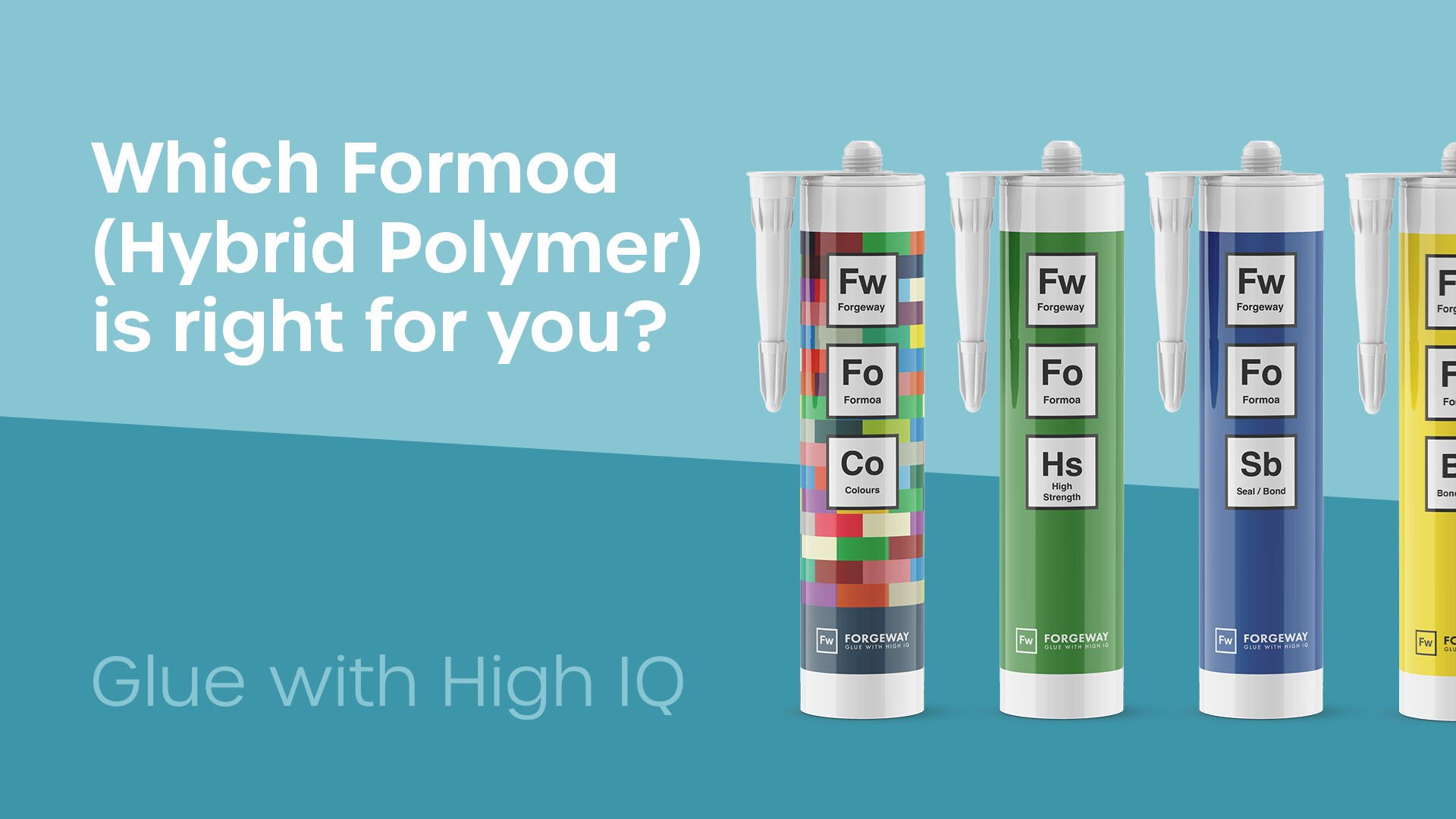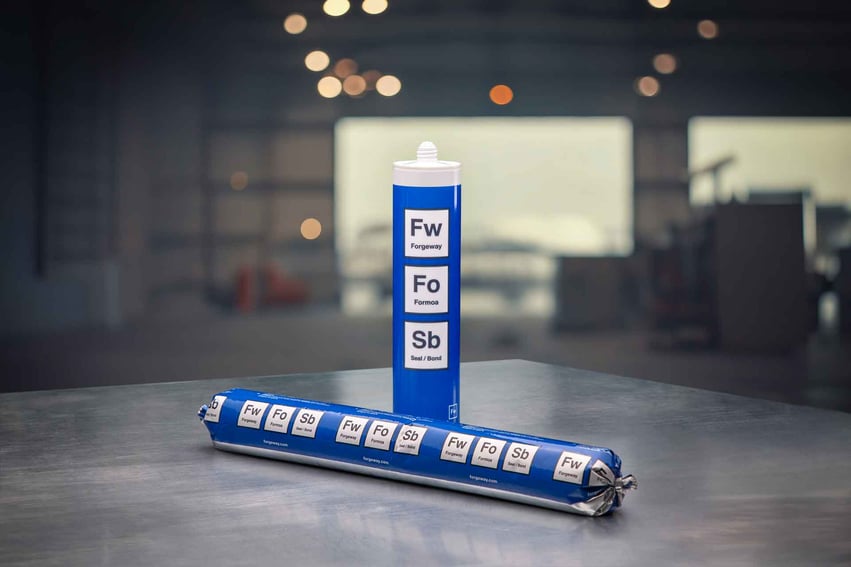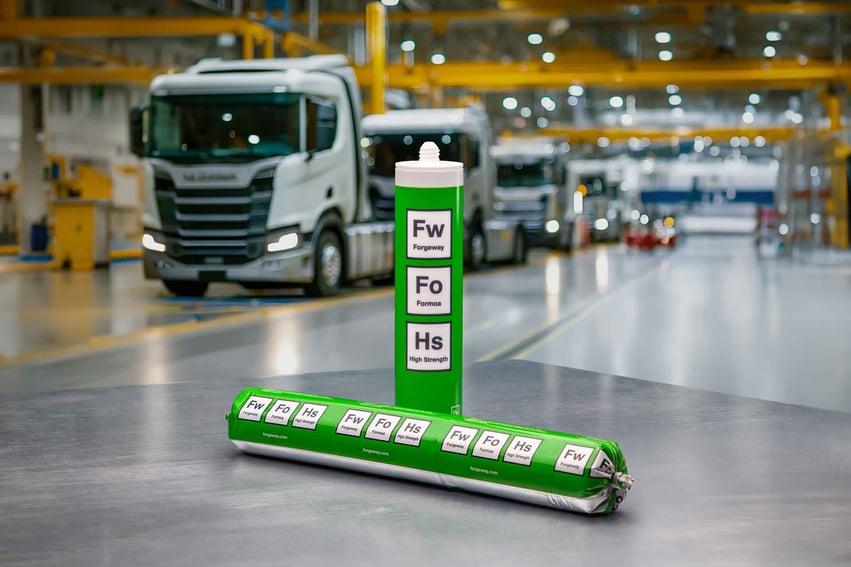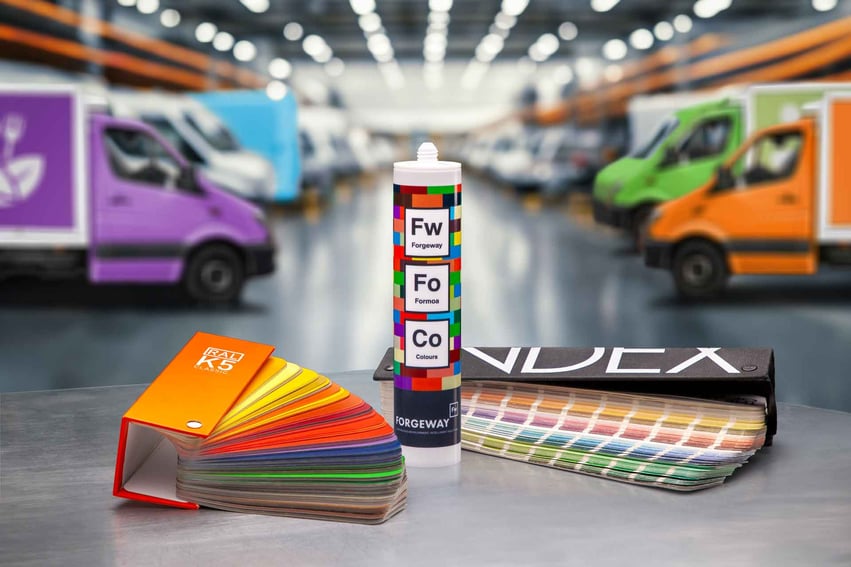Which Formoa (MS polymer adhesive) is right for you? Comparing the different types

So you’ve done some research and established that MS polymer adhesives look like a good fit. Now you want to discover whether we can offer the right MS polymer adhesive product for you.
Here at Forgeway, we have been manufacturing adhesives for over 25 years. Our most popular product range is Formoa; our selection of MS polymer adhesives.
Formoa is our range of MS polymer adhesives. However, there are several different types of Formoa. How can you tell which is the right one for you?
This article will discuss the different types of Formoa we offer and will help point you in the right direction of which type of Formoa would be a good fit for you.
By the end of the article, you will have a good idea of which Formoa type would be the best for you to explore further.
Formoa for sealing and bonding
Formoa for bonding and sealing is our most popular type of Formoa. The reason it is so popular is that you can use it for a variety of applications. You could use it as a sealant where you require little-to-no strength. You could use it where you need it for holding substrates in place but no sealing. Or, you could use it for both.
As an example, a caravan manufacturer is bonding capping around the edge of the vehicle. The manufacturer also needs to seal the capping so no water leaks in. Rather than using two different products to bond and seal the capping, Formoa seal and bond can do both.
Ultimately, Formoa for sealing and bonding is very versatile. It is also often cheaper than most other types of Formoa. However, several different factors can affect the price of Formoa.
The reason we developed this product was to create a product that had enough strength to hold substrates in place but also had very good sealant properties.
If you want an adhesive that you can also use as a sealant, Formoa seal and bond is the product for you.
You can read a product review of Formoa 063, one of our most popular bond and seal Formoa products.

Formoa for high-strength applications
These types of Formoa are so strong that we would classify them as structural adhesives. These high-strength options will typically have decreased flexibility. This makes them less suitable for use as a sealant.
However, for applications where you need a structural adhesive that is also highly flexible, high-strength Formoa is perfect for you. Usually, when the bond experiences a lot of movement (dynamic load), you will need to use an adhesive with lots of flexibility.
Moving structures (like vehicles or boats) sometimes need a structural adhesive for bonding heavy substrates in place. It can be difficult to know where to find a structural adhesive that has enough strength and flexibility to deal with the significant movement a vehicle experiences. High-strength Formoa is the ideal adhesive in this situation.
The strength, coupled with the flexibility means that it is strong enough to become part of the structure but also has enough flexibility to cope with the movement.
So if you need a high-strength and flexible adhesive, Formoa high-strength is what you should explore further.

Formoa for bonding glass
We know that bonding glass isn’t just a typical bonding situation. Often, companies use a polyurethane-based adhesive to bond glass. But, you will often need to use a primer with polyurethanes.
Formoa glass bonding adhesives are fully primerless. They have high grab as well as the required strength and flexibility to make a suitable glass bonding adhesive option.
Glass bonding adhesives must be strong and flexible. Glass isn’t light, but it is rigid. This means that the adhesive you use must absorb any shocks and vibrations. Particularly when the bond is likely to experience lots of movement (like windows in vehicles). If the adhesive isn’t flexible, any shocks or vibrations will be transferred to the glass; causing it to shatter.
Glass bonding Formoa is an ideal option if you are looking for a primerless glass bonding adhesive.

Colour-matched Formoa
You can colour-match any Formoa product. However, you will only typically need a colour-matched sealant. This is because sealants are usually visible. When you have a sealant that isn’t colour-matched, it can damage the aesthetics of the structure you are sealing.
So, whilst you can colour-match any adhesive or sealant from the Formoa range, we have one product that is dedicated to colour matching. It is easy to work with, has high flexibility, and can be colour-matched to any colour you require.
We designed the product as a very effective sealant. However, it does have relatively high strength (compared to other sealants), meaning it will hold some substrates in place. We would never recommend it for use as an adhesive though.

Formoa for bonding polypropylene and LSE plastics
Glass bonding isn’t the only difficult bonding application. Low surface energy plastics are also notoriously difficult to bond. Polypropylene is one of the most common low-surface surface energy plastics. Often, companies struggle to use it as it is so difficult to bond.
Nonetheless, you can use Formoa to bond low surface energy plastics. Using a specialist primer with Formoa, you can achieve very high strength bonds with low surface energy plastics.
So ultimately, you can use Formoa to bond low surface energy plastics. You will just need to use a specialist primer.

Choosing the right MS polymer Formoa adhesive for you
It is never easy to know which adhesive product is right for you. You will have established that MS polymer adhesives sound a good fit. You then read this article to learn about which MS polymer adhesive options we provide here at Forgeway.
We understand that our range of MS polymer adhesives (Formoa) is very diverse. This article will have given you a good idea about which route you need to explore further.
- If you need a high-strength but flexible adhesive, Formoa high-strength is the route you should explore further.
- When looking for an adhesive that you can use to bond and seal, Formoa bond and seal will be the adhesive you want to explore further.
- However, if you are looking for a specialist adhesive or sealant then you can look into some of the other Formoa options.
- Glass-bonding Formoa may be the perfect adhesive if you are trying to find a primerless glass bonding adhesive.
- Coloured sealants are very popular. If you are interested in our colour-matched sealants, Formoa colour match is where you will want to explore further.
- And finally, if you are trying to bond low surface energy plastics, you can use a specialist primer with any of the Formoa products.
Ultimately, the range of Formoa products is very diverse. We know that choosing which one you want to explore further can be difficult. If you are still looking for help with which product is right for you, a member of our team would be more than happy to help you decide.
Thomas is the Content Manager here at Forgeway. Thomas' job is to translate the technical jargon from the ivory tower of academia into easy-to-read content that everyone can understand. Forgeway's mission is to answer every question our customers and prospective clients ask, or are apprehensive to ask.



